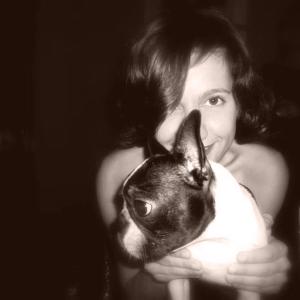How Dutch Invertuals became a go-to resource for talent scouts
The Insiders
It began by chance, in Milan in 2009, through a self-titled show that presented works from a newly formed collective of independent designers from Eindhoven. The participants shared an enthusiasm for investigating new international research tendencies, caring little whether their installations were easily accessible to lay audiences.
The gambit worked, and design professionals from all over the world heaped praise. The shows that followed—two per year in Milan and Eindhoven—have continued to explore abstract, meaty themes ranging from Conflict (2012) and Happy Future (2014) to Advanced Relics (2016). Today, Dutch Invertuals is recognized as a can’t-miss showcase for the most interesting design emerging from the Netherlands; an essential resource for gallerists, curators, collectors, and companies on the hunt for new talent.
From the beginning, the Dutch Invertuals project has been shepherded by founder, curator, and art director Wendy Plomp. “We shared our vision on design,” she explains, “in order to promote a deeper understanding of design’s relationship to physical context, identity and culture—all of us with the same commitment, mentality, and willingness to work together to create something new.” Intellectually driven and idealistic, Plomb has inspired in an impressive array of collaborators.
Germans Ermičs, Pepe Heykoop, Odd Matter , Arnout Meijer, OS ∆ OOS , Michael Schoner, Studio Truly Truly, Philipp Weber, and Hongjie Yang—these are just a handful of the rising-star studios that have contributed to the Dutch Invertuals exhibitions over the years. When asked about their motivations for joining in, almost all cite the opportunity to freely experiment and evolve through mutually uplifting camaraderie.
Take, for example, a comment from Daniera ter Haar and Christoph Brac of graphics studio Raw Color, who have played recurring roles for Dutch Invertuals, including exhibitor, guest curator, and communications designer: “The momentum [around the project] allows designers to exchange with each other and enrich their practice. We consider it to be a playing ground that’s helped a generation of designers to develop and get established, resulting in both professional relationships and friendships.”
Artist-designer Carlo Lorenzetti enthuses: “The work [with Dutch Invertuals] often falls outside of what is traditionally thought of as design. But this is where things get exciting.” And Daphna Laurens adds: "Being together through Dutch Invertuals made us realize that you have to collaborate to be more powerful; it stimulates us to new ideas, insights, and growth."
As we look forward to the next edition of Milan Design Week, anticipating the annual moment when the international design world comes together to see what’s new, we reached out of Plomb to talk about the impact Dutch Invertuals has had on the landscape of contemporary design, most especially on those who are engaged in design scouting, collecting, research, and discourse.
AR: Take us back to your first show in Milan. What do you remember most about those days?
WP: As a group, we were unaware of the impact we were having following our presentation in Milan. We started with just this unstoppable urge to create, develop, and innovate. It wasn’t just about the work [that we exhibited], which was simply the end result. We were mainly concerned with process, dialogue, and taking an active approach. We encouraged each other to think in a different way, which brought us new insights, concepts, and creations. Each designer involved felt responsible for the whole. So together we were actually able to create this impact. Most were so thrilled with the collaborative format that they wanted to continue on back in Eindhoven.
AR: Over the years, you’ve assumed a remarkable responsibility for contemporary Dutch design. Why did you choose this path?
WP: After graduation from the Design Academy, I formed my own vision on design. For me, design is a process of opposing and reversing things; to inverse. That is where the name “Invertuals” came from. It is like seeing the world upside down, from a radical, new angle. I like to work with designers and artists from different disciplines to rethink ideas from unexpected perspectives. Dutch Invertuals is all about challenging the boundaries of design.
AR: Can you tell us more about your relationships with the designers you have worked with?
WP: I do my research on young designers—I select or “scout” them so to say. Their work ethic and approach has to fit within the mentality of our collective. Then it is very important to develop a close relationship with each individually. You have to know a designer on a personal level to get the best out of them and to create a comfortable group dynamic. So we see each other every two weeks. And I coach them in a way to take their work to the next level.
AR: After almost 20 exhibitions in Eindhoven and Milan since 2009, what changes have you noticed in the field of design?
WP: What I notice is that a lot of designers don’t want to be superstars anymore; they don’t want to be famous. They like to team up and work together. It is necessary to work in this way, to push design into a new direction, to create totally new objects and thinking patterns. So, in a way, design has become more transparent and more about sharing knowledge. Together within this field we explore our future and our habitat. We’re creating usable rather than functional objects.
AR: Do you think Dutch design is different from other national design expressions?
WP: There is a strong sense of social responsibility and awareness of our future in Dutch design nowadays. Exhibitions and events show that designers here are trying to make a difference in various ways. It is not entirely about the best [selling] product anymore; rather it’s about being socially responsible, shaping the future, and embracing it.
AR: Dutch Invertuals is focused on bringing vision, research, experimentation, and passion to design. But every show presents a quite interesting selection of objects to collect. What is your idea about collectible design?
WP: It’s in our nature—our instinct—to collect. It’s something that humans will always be fascinated by. The objects created by the Dutch Invertuals collective look usable, but they don’t have a function yet. The language of form and their personality is what makes them collectible. It’s not our core business though. Our focus is more about shaping narratives then about showcasing collectible design. We’re not only making expositions; we’re also presenting our insights in other forms, such as developing interiors and creating trend books. In this way, we also share our knowledge and experience with consumers and businesses.
AR: Tell us something about your audience.
WP: We have our “ambassadors”—people who have been following us from the start. I’m talking about designers, curators, art dealers, and trend-watchers. They want to stay on top of these kinds of things, to be inspired, and to soak in new ideas like sponges. They eventually take these ideas home and use them for their own practices.
AR: Your next plans for Dutch Invertuals?
WP: After 8 years, we evolved into a mature brand. We will continue to push our boundaries and pioneer, of course. But, for instance, we started this year making windows for Selfridges in London. We are excited about a number of new projects that are coming up. Together with our partner in crime, [Eindhoven-based multidisciplinary architectural collective] Edhv, we are making visionary plans for holiday houses. In four months, we have Salone del Mobile, and an exciting expo at the end of this year in our hometown Eindhoven during the Dutch Design Week. We’re also researching and creating content for our book, which in a way celebrates our 10th anniversary.
The next edition of Dutch Invertuals, Mutant Matter, co-curated with Franklin Till, will be open to the public during this April's Salone del Mobile at Via Pastrengo 12 in Milan. Watch this space!
-
Text by
-
Annalisa Rosso
Annalisa is a freelance journalist, trendsetter, and independent curator often hired as an Italian correspondent on design and contemporary art. She is curious about everything, always looking for something new. Because unrest is a good engine.
-
More to Love
Chest No. 1 by Wouter Scheublin
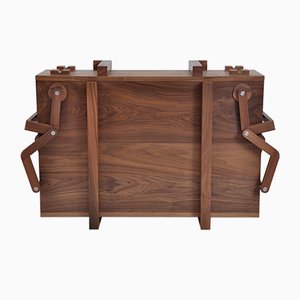
Walnut Walking Table by Wouter Scheublin
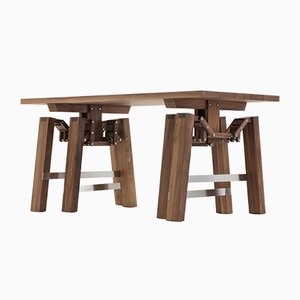
Tassenkast with 7 Bags by Lotty Lindeman

Tassenkast with 3 Bags by Lotty Lindeman
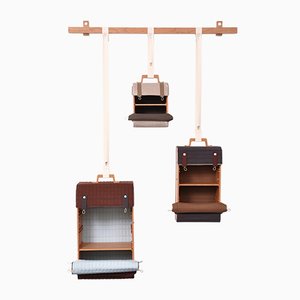
Limited Edition Toy Car by Wouter Scheublin
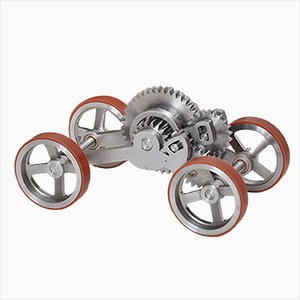
Black Colouring Table from OS ∆ OOS

Gold Colouring Table from OS ∆ OOS

Syzygy Eclipse Table Lamp from OS ∆ OOS
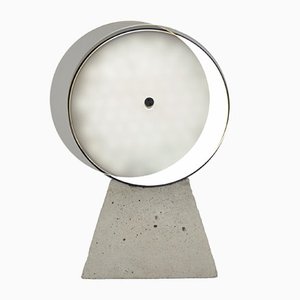
Belgian A Strange Symphony on Colours Vase by Philipp Weber for Christophe Genard, 2016
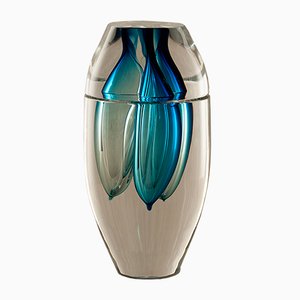
Syzygy Occultation Table Lamp from OS ∆ OOS
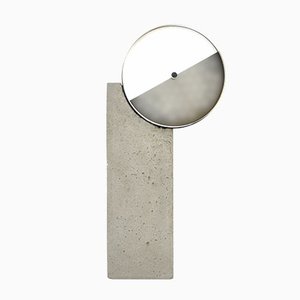
Soft Oak Chair by Pepe Heykoop
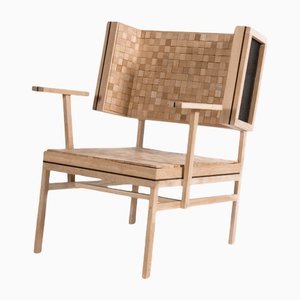
Skin Leaning Wall Lamp by Pepe Heykoop
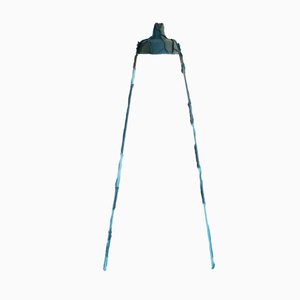
Menorah by Pepe Heykoop
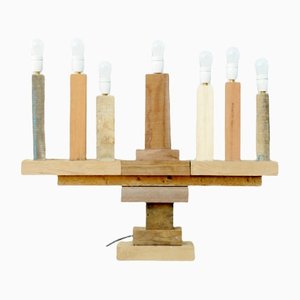
Bits of Wood Table by Pepe Heykoop

Skin Dressing Doll with Lamp by Pepe Heykoop

Restless Chair in Beige by Pepe Heykoop


